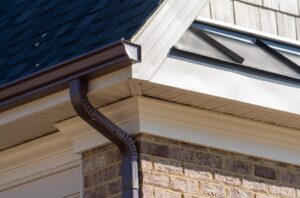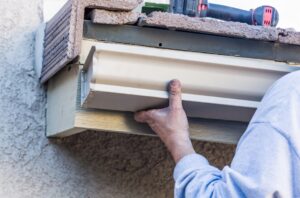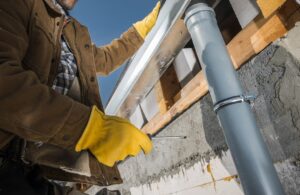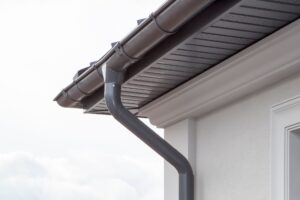Spring is a crucial time for homeowners along Lake Erie to give their homes the care and maintenance needed after a harsh winter. With melting snow, heavy rains, and unpredictable storms, your gutter system plays a more important role in protecting your foundation, roof, and siding than you might think. If ignored, clogged or damaged gutters can quickly lead to costly water damage.
To help you stay ahead of expensive repairs, we’ve created a Spring gutter cleaning checklist specifically for Lake Erie homeowners. Whether you plan to do it yourself or hire a professional, these gutter maintenance tips will guide you through the steps needed to keep your home safe and dry.
Why Spring Gutter Cleaning Is Essential in Lake Erie
The Lake Erie region is no stranger to extreme weather, ice storms, lake-effect snow, high winds, and fallen debris, which are part of the seasonal cycle. As the weather warms up, gutters clogged with winter remnants like ice, twigs, and decaying leaves can overflow and direct water where it doesn’t belong. That water can seep into basements, rot fascia boards, and erode landscaping.
Proper gutter maintenance is the first line of defense. By following a thoughtful Spring gutter cleaning checklist, you can ensure your gutters work effectively all year long.
Your Spring Gutter Cleaning Checklist
Follow this list step-by-step to get your gutters back in shape and prevent seasonal water damage.
Inspect Your Gutters for Winter Damage
- Check all sections for visible cracks, sagging, or warping.
- Look for rust, corrosion, or peeling paint; these are signs of deterioration.
- Ensure all fasteners and brackets are tight and secure.
- Make sure the gutters are still properly pitched toward the downspouts for efficient drainage.
Clear Out Debris
- Remove all leaves, pine needles, twigs, and any accumulated dirt by hand or with a scoop.
- Use your garden hose to flush remaining debris and to check for smooth water flow.
- Watch for overflow points where water spills over; these indicate potential clogs or improper alignment.
Check and Clear the Downspouts
- Flush each downspout with water to confirm it’s free of blockages.
- If water backs up, use a plumber’s snake or a pressure nozzle to remove any obstructions.
- Make sure the downspouts direct water at least 4 to 6 feet away from your foundation.
Seal Any Leaks
- Inspect joints and corners for leaks where water might escape.
- Use a high-quality silicone gutter sealant to close up any gaps or holes.
- Pay close attention to older seam areas, which are prone to separation over time.
Realign Loose or Disconnected Sections
- Tighten loose brackets or screws and replace any missing hardware.
- Realign sections that have shifted due to snow loads or wind damage.
- Gutters that sag or pull away from the roofline need immediate correction to prevent overflow and detachment.
Look for Water Damage Around Your Home
- Examine your siding, fascia boards, and window frames for water stains.
- Check your basement walls for signs of moisture or flooding.
- Water stains around gutter lines often indicate overflow or leaks during the winter months.
Trim Back Overhanging Tree Branches
- Remove or prune back branches hanging above or near your roofline.
- This helps prevent additional leaves, seeds, and twigs from collecting in your gutters.
- Reducing overhead debris is one of the most effective long-term gutter maintenance tips.
Consider Installing Gutter Guards
- If you’re tired of cleaning gutters each spring and fall, consider installing a protective guard system.
- Gutter guards are great because they help keep leaves and debris from clogging your gutters while letting water flow freely.
- They’re especially helpful in the Lake Erie region, where seasonal tree shedding is a major concern.
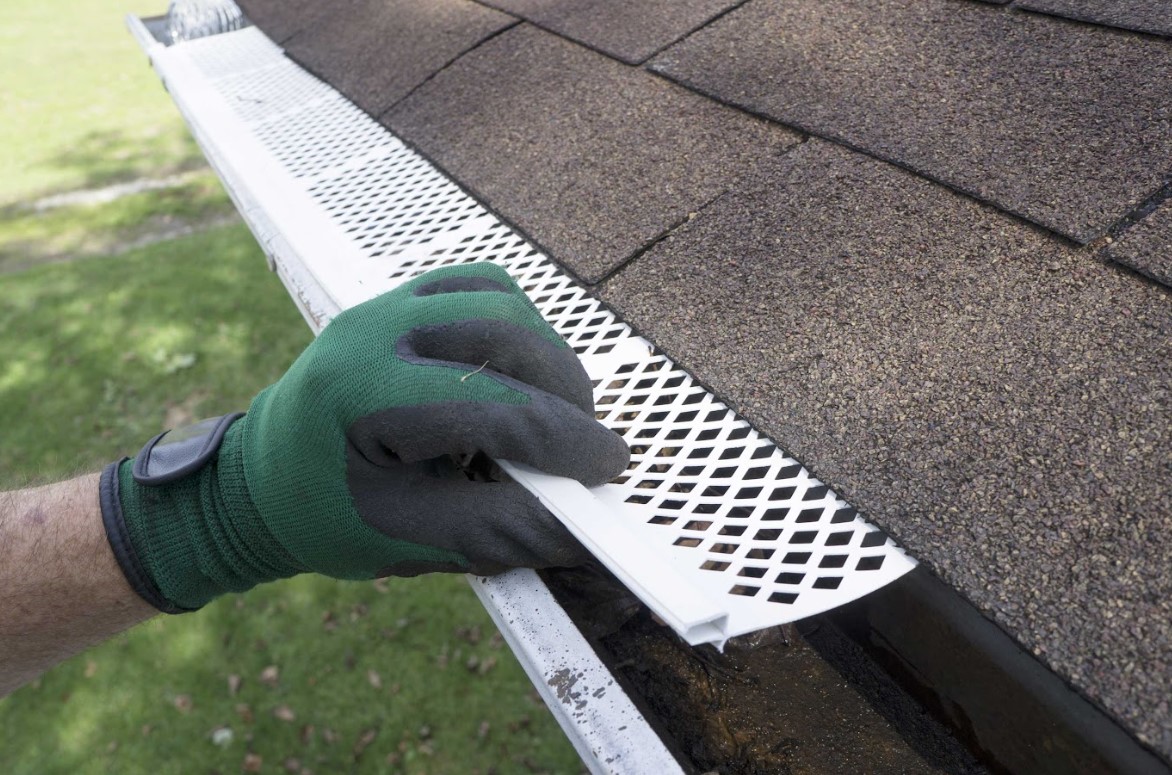
What’s at Risk If You Skip Gutter Maintenance
Ignoring regular gutter maintenance can lead to serious consequences. Homeowners around Lake Erie face some unique risks due to constant freeze-thaw cycles and heavy precipitation.
- Cracked foundations from pooled water
- Flooded basements due to overflow
- Rotted fascia and soffits
- Damaged landscaping from water runoff
- Ice dams forming inside gutters, leading to roof leaks
The cost of these repairs can be significant. Preventative gutter maintenance is a fraction of the price compared to structural repairs or mold remediation.
DIY Gutter Cleaning vs. Hiring a Pro
Many Lake Erie homeowners are comfortable cleaning their gutters themselves, but it’s not always the best option, especially for multi-story homes or complex rooflines.
DIY Risks:
- Falls from ladders
- Poor water drainage from improper cleaning
- Missed signs of structural damage
- Lack of safety equipment
Professional Benefits:
- OSHA-certified equipment and trained technicians
- Faster and more comprehensive service
- Detailed inspection reports
- Recommendations for upgrades or repairs
If safety or time is a concern, hiring professionals for your Spring gutter cleaning ensures the job is done right the first time.
Gutter Maintenance Tips for Every Season
To keep your gutters functioning all year long, develop a seasonal plan:
- Clean gutters at least twice a year; spring and fall are ideal times.
- Inspect them after every major storm.
- Watch for signs of damage like peeling paint, stains, or sagging.
- Get downspout extensions to direct water away from your home.
- Add gutter guards if frequent cleanings become too much of a hassle.
By keeping up with gutter maintenance, you extend the life of your roof, siding, and even your foundation. It’s one of the smartest investments you can make in your home.
Schedule Your Free Gutter Inspection Today
Now that you’ve seen how important Spring gutter cleaning is for Lake Erie homes, take the next step. Whether you’re dealing with overflowing gutters and visible damage or just want peace of mind before the rainy season hits, our team is here to help.
Schedule your free inspection today and get a complete, professional assessment of your gutter system. We’ll identify any issues, recommend solutions, and ensure your home is protected all year long.
Don’t wait for the next storm to reveal hidden problems, book your inspection and get ahead of the season.

